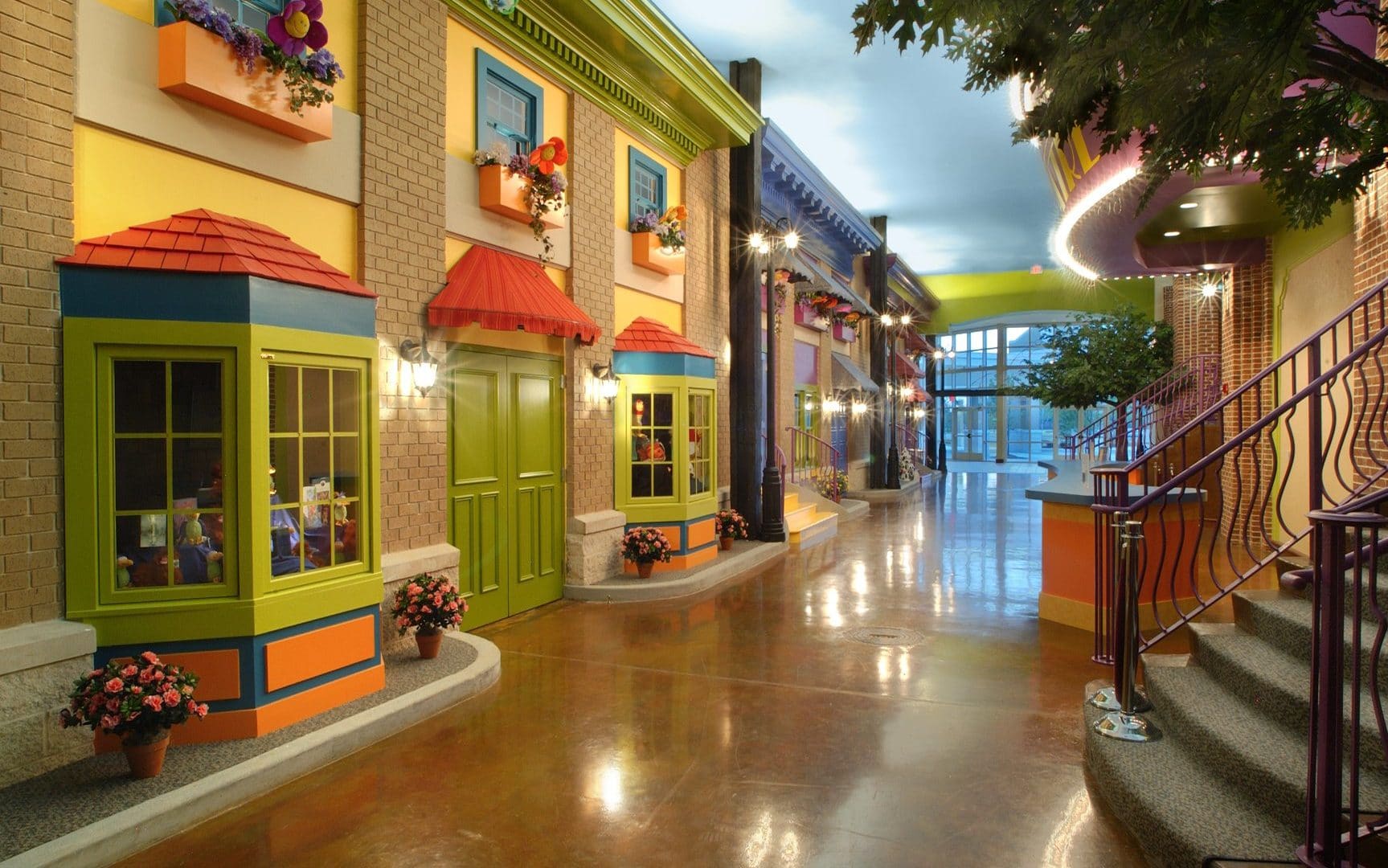By Paulla Shetterly
A properly planned and executed themed environment can be an effective tool for any church aiming to recruit new members or bring back former attendees.
It’s well understood that the children’s ministry is a key growth engine for any church, and a great way to engage this vital demographic is by articulating your churches message through an inviting, youth-oriented space.
In our experience, the effect extends well beyond the kids. Themed spaces provide a renewed enthusiasm throughout the church. Every theming project we have ever done at CDH has resulted in doubling or even tripling the adult volunteer base.
But once you’ve made the decision to invest resources in this rapidly growing trend, there are some important considerations to make.
Careful planning can save you time and money while ensuring that your space remains relevant and practical long into the future.
Discuss Your Budget with a Professional
All churches rank budget as a primary concern for any project, and just as with any major investment, understanding the limitations of your budget and the lifespan of your project is essential.
Sometimes, in an effort to stretch a limited budget, churches begin the process on their own and reach out to the professionals only after they’re in the tall weeds or, worse, after things have gone wrong. That can be a costly mistake.
The relationship between the church and the designers and vendors should be an asset throughout the process, but the best time to develop lines of communication and trust is in the early planning stages.
A professional designer—one who has extensive experience working with churches with a wide range of budgetary restrictions—can inform you of the available options and how your budget can be used most effectively.
Identify Your Target Audience
Once budgetary concerns have been addressed, the next critical item is determining who your target audience is and how your themed environment will appeal to them over the long-term.
Although they are often designed to engage young children, themed environments can become more contemporary and serve multiple purposes and age groups.
Your audience’s interests will change and grow over the years. A design that addresses this fact is one of the most effective long-term budget savers, as it can delay the need for an updated look or replacement for many years.
Design with Longevity in Mind
Going with what adults think is “cute” or with a theme that’s trendy at the moment can produce a space that quickly becomes dated, diminishing its long-term effectiveness.
This is especially troubling for churches with limited revenue streams and will be unable to make changes for some time.
This is where a good line of communication with the designer plays a vital role, as the designers can offer a broad range of ideas and they know through experience what works and what doesn’t.
They can also take your ideas and match them with suitable technologies and materials that are most likely to endure over the life of the themed environment.
Make It Part of Your Process
The key responsibility for a themed environment is to serve as a canvas or backdrop for the pastors and teachers to share the Word. A well-designed space can become a flexible part of your process, allowing a wide range of interactions that build fellowship and team work.
Themed environments are designed to be fun, engaging and also educational, presenting the church as a place where kids can be kids but also feel welcomed and safe.
This goes well beyond just a mural on the wall. The space can include features like rock climbing walls, basketball cages, gyms or game rooms.
Consider how these features fit and how they can enrich your program.
Trust the Professionals
A two-way street of communication between the church and the designer is vital. Themed spaces are unique and personal to the character of the church and the church’s message.
Choose a designer that values your ideas and is an excellent listener who seeks to understand your unique message. Then trust their feedback and guidance to bring your ideas to life.
As these spaces are designed for a great range or activity, a professional can also provide important advice on important issues such as safety and sustainability.
Paulla Shetterly is the interior design principal with CDH Partners, a group of creative people who plan and design spaces that make a difference, such as hospitals, schools, churches, and much more, www.cdhpartners.com.




